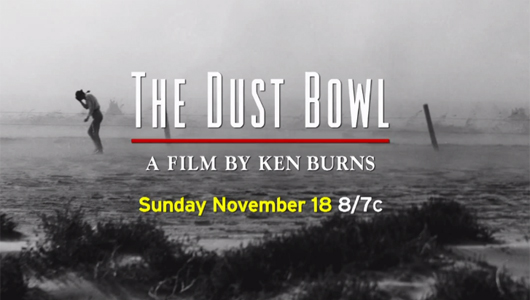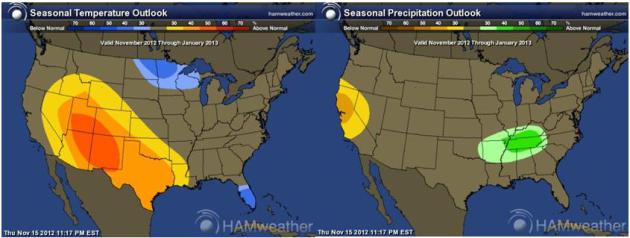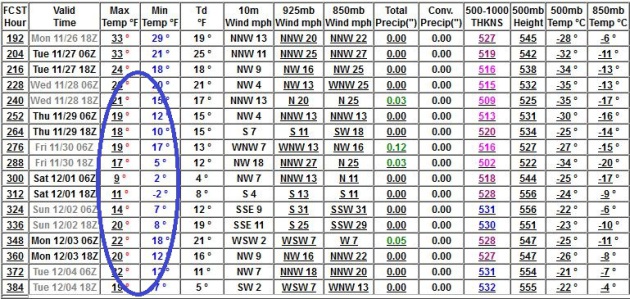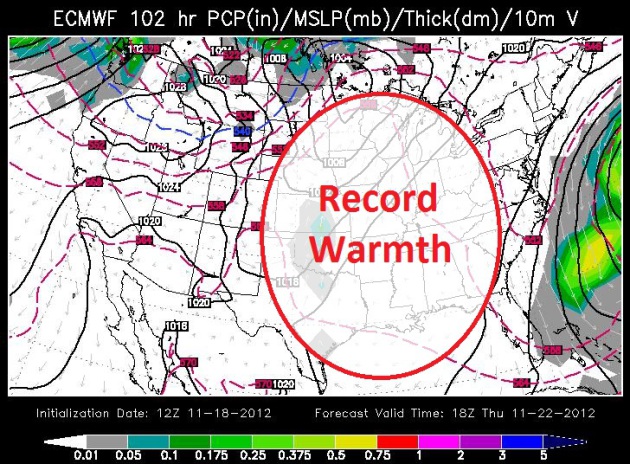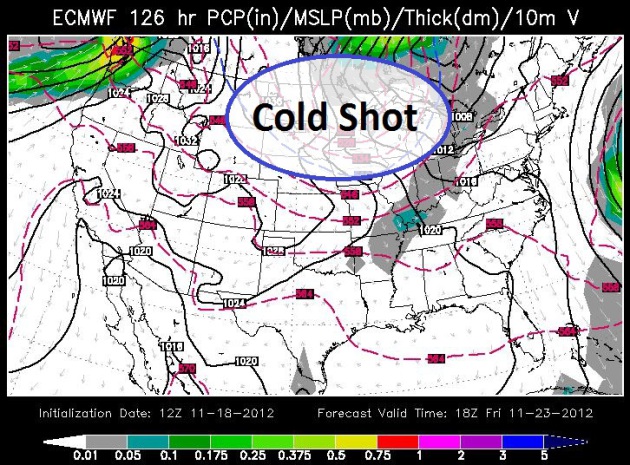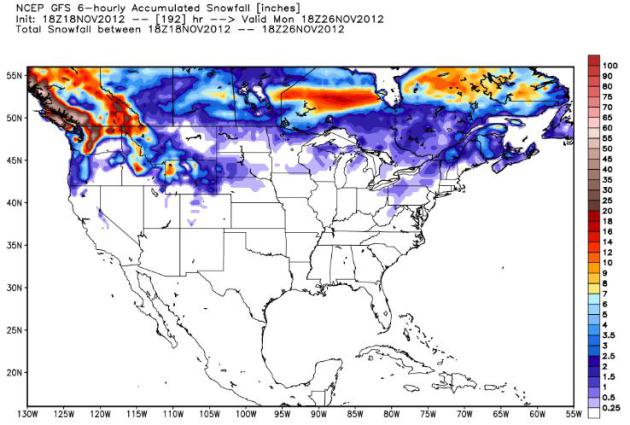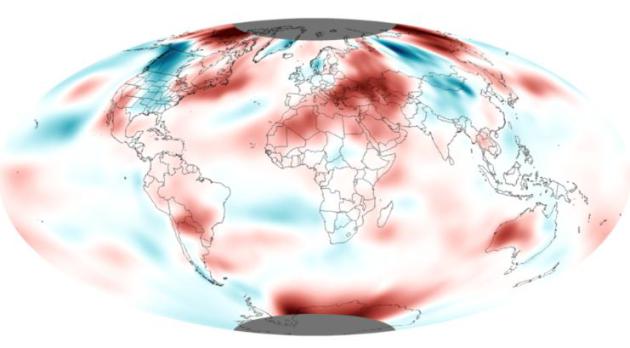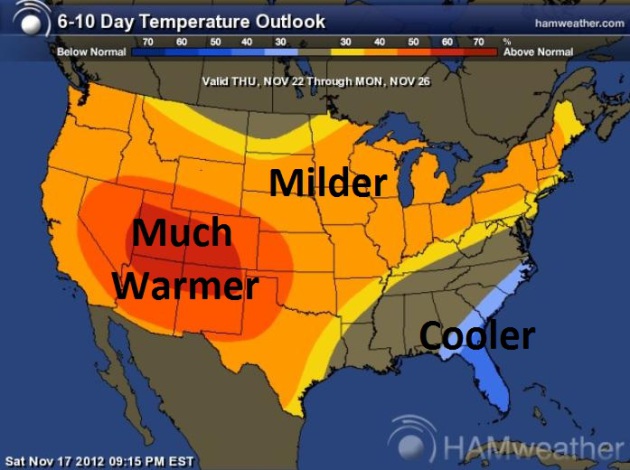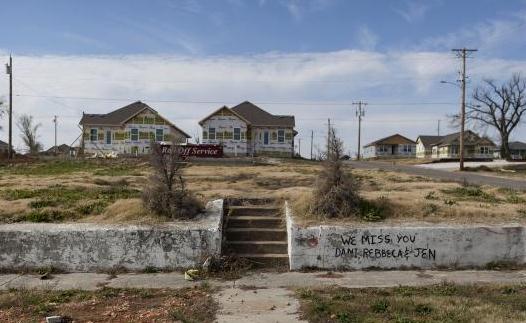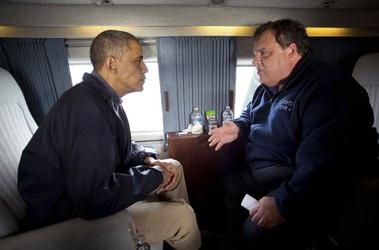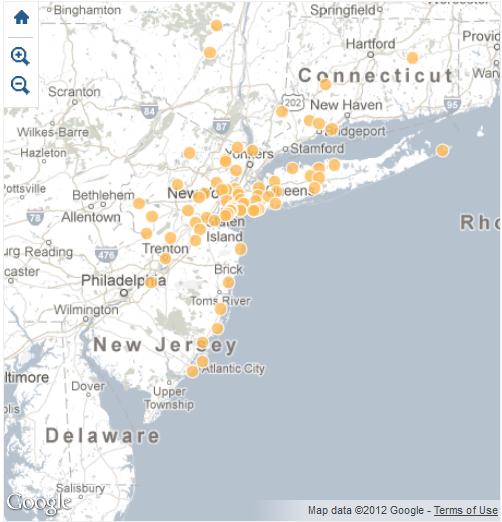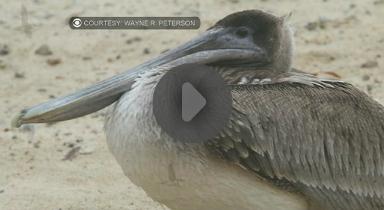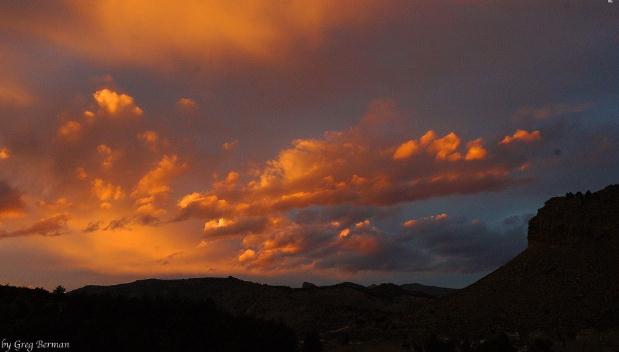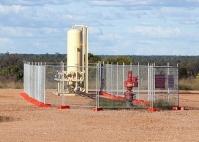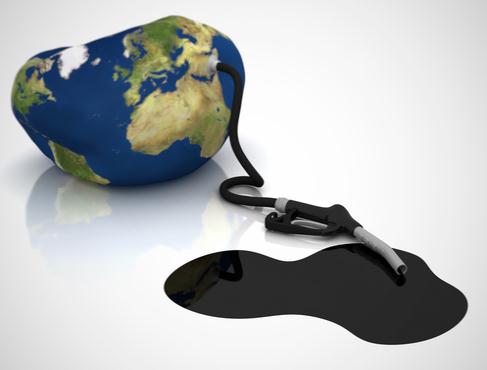Long Shadows
"One kind word can warm three winter months"
goes my favorite Japanese proverb. I'm going to give you two kind words:
Indian Summer. The mercury brushed 60 yesterday at Eden Prairie and
Blaine. We may hit 60 today, again Wednesday - the ECMWF model hinting
at mid-60s Thanksgiving, close to record territory!
Not too shabby, considering the sun is as low in
the sky as it was on January 23. You won't need a snow shovel anytime
soon, but sunglasses are required, now that the leaves are off the trees
and a lazy sun hugging the horizon makes it blinding on area highways. A
nice problem to have.
A mild, Pacific breeze spills over into
Thursday; mild enough for a game of football or a brisk walk around the
block - to burn off that second serving.
Take nothing for granted.
A cold front sweeps in for "Black Friday" with
30s and a wind chill closer to 20. Consider shopping for a new coat.
Winds ease up on Saturday, the mercury recovering above 50 by Monday
before a second wave of numbing air arrives next week.
Lukewarm-weather-lovers: your days are numbered. Then again, I said
something similar two months ago.
This makes 10 Novembers (in a row) warm enough to play golf. In Minne-snowda?
Leonid Meteor Shower. Thanks to Steve Burns, who
snapped this photo of a lucky shooting star Saturday night, captured at
Chengwatana State Forest east of Pine City, Minnesota. Well done!
Why The New Ken Burns Documentary On The Dust Bowl Has Lessons To Teach Us.
Are you watching the Ken Burns doc on The Dust Bowl? It's remarkable,
like all of his documentaries, but with a persistent drought gripping
Minnesota and much of the Plains his storytelling takes on a new sense
of urgency. Sure, topsoil techniques and land management have improved
dramatically since the 1930s, but could something similar ever happen
again? After the extreme weather we've witnessed the last 2 years I
wouldn't rule anything out. Here's an excerpt of a story at
Time Magazine: "...
But
while the 2012 drought may have been the worst in a half-century, it
has nothing on the great Dust Bowl of the 1930s. That decade-long
drought - exacerbated by poor farming techniques that left topsoil
crumbling in the wind - changed the face of the U.S. and led to massive
migrations out of farming states in the Midwest. As the master filmaker
Ken Burns shows in his new documentary The Dust Bowl - airing on PBS
Sunday night and Monday night - it's a man-made disaster that still has
lessons for us today. "The Dust Bowl has never gotten the attention it
deserves," says Burns. "But we can see today with this year's drought,
or with climate change, that we can affect the environment, whether we
want to acknowledge it or not..."
Revised Winter Outlook (Don't Hold Your Breath).
NOAA's Climate Prediction Center has tweaked the November thru January
forecast for the USA, calling for milder than average over the Southwest
and Southern Plains with a 30-40% risk of colder than normal
conditions across the eastern Dakotas, Minnesota and northern
Wisconsin. This is based on a fading El Nino signal in the Pacific, and
a negative phase of the NAO, the North Atlantic Oscillation, which may
keep prevailing jet stream winds howling from the northwest much of
the winter. But CPC admits that this is a very difficult forecast, I
get the sense that confidence levels are low. I'm not convinced we're
going to wind up with a colder than normal winter, at least not yet.
Maps above: CPC and
Ham Weather.
Major Shift In The Pattern Imminent? Both the AO
(Arctic Oscillation) and NAO (North Atlantic Oscillation) go strongly
negative by late November, suggesting a buckling of steering jet stream
winds aloft capable of plunging bitter air southward - the greatest
potential for heavy rain/snow for the east coast. Notice how low the NAO
was when Sandy spun up in late October, as low as -2. The pattern still
seems to favor the biggest storms detouring well south/east of
Minnesota looking out into mid-December. AO index
here, NAO
here, courtesy of NOAA.
 Arctic Oscillation
Arctic Oscillation.
The AO and NAO are blocking patterns, impacted by a variety of
meteorological factors, including stratospheric temperatures, blocks
over Greenland, sea surface temperatures and other forcings. During a
positive phase the coldest air remains north over Canada, more of a
milder, Pacific influence on the Lower 48. But during a negative phase
(like what's coming up in early December) winds aloft weaken, allowing
bitter air to plunge southward, often spinning up significant snow/ice
storms in advance. Graphic: UCAR.
Extended Outlook: Brrrrr. Soak up the relative
warmth, because some big changes are on the way for the last couple days
of November and at least the first week of December. The GFS output
(above) shows highs in the 20s, a few nights near zero in the metro by
the first weekend of December. And no, I don't see any significant snow
preceding this cold blast.
An Indian Summer Thanksgiving? The latest
ECWMF (European) model suggests record or near-record warmth from the
Twin Cities and Chicago south to St. Louis on Thursday, highs reaching
the 60s as far north as Minnesota and Wisconsin, 70s possible over the
Central Plains and Middle Mississippi valley. Showers are possible over
Seattle (and Wichita, Kansas), but otherwise the most reliable model is
hinting at a very quiet and dry Thanksgiving, temperatures more typical
of late September east of the Rockies. Map above: WSI.
Fiscal Cliff? More Like A Temperature Cliff. After
peaking well into the 60s Thursday the mercury plummets nearly 30
degrees on Friday with gusty winds creating a wind chill dipping into
the teens and 20s. After a shirtsleeve Thanksgiving you'll need heavy
jackets and coats for shopping on Friday. A chilly Saturday (more sun,
less wind) gives way to low 40s by Sunday, a shot at 50 Monday before
another surge of cold air arrives by Tuesday of next week.
Black Friday? More Like Blue Friday. Blue, as in no
feeling in your fingers, toes and nose. A vigorous cold front plows
south Friday, holding temperatures in the 20s and 30s from the Dakotas
into Minnesota and Wisconsin, an even colder wind chill. Unlike a couple
weeks ago we do NOT expect tornadoes to spin up along this push of
Canadian air, with little or no snow behind the front - with the
exception of some possible lake effect snows for northern Wisconsin and
the U.P. of Michigan. Map above: 18z Friday, courtesy of WSI.
Total Snowfall By Midday Monday. Snowmobiles and
cross country skis will collect dust for at least another week, probably
longer, I fear. The GFS model keeps the most significant snow just
north of the U.S. Canadian border thru next weekend; some 12-24" amounts
for the Cascade Range of the Pacific Northwest - a litlte lake effect
snow kicking in downwind of the Great Lakes by late week and the
weekend.
October: 5th Warmest On Record. Details from
NOAA's Environmental Visualization Laboratory: "
Recently
released analysis by NOAA scientists at the National Climatic Data
Center reveals that October 2012 was the 5th warmest on record, dating
back to 1880. This image, using data from NCDC’s Global Historical
Climatology Network shows areas of warmer (red) and cooler (blue) than
normal temperatures. While extreme warmth dominated the high latitudes,
higher-than-average monthly temperatures were observed across much of
Europe, western and far eastern Asia, northeastern and southwestern
North America, central South America, northern Africa, and most of
Australia. Meanwhile, much of northwestern and central North America,
central Asia, parts of western and northern Europe, and southern Africa
were notably below average...."
Time Warp. NOAA CPC's 6-10 day temperature outlook
keeps most of America warmer than average thru the end of next week,
much warmer for the Southwest, but cooler than average from Florida to
the Outer Banks of North Carolina. Map:
Ham Weather.
Joplin Residents Carry On After Tornado. I'm a big fan of "
Marketplace"
- from American Public Media. Think Wall Street Journal on the radio,
only progressive and more moderate in tone, but loaded with remarkable
facts, anecdotes and stories that humanize complex stories, many about
finance and the economy. Here's an excerpt of a must-listen podcast
focused on the people who survived one of America's most violent
tornadoes in recorded history, the Joplin EF-5: "
Even today, you can
stand on what passes for a hill in Joplin's midsection at 23rd Street
and Pennsylvania Avenue, look east and look west and see empty space.
The trees are still gone. Apartment complexes are gone. The hospital is
gone. The high school is gone. That's what happens when an EF-5
tornado touches down eviscerating everything in its path as it did
there on Sunday, May 22, 2011 -- 161 people died. As Joplin's residents
make their way through the stages of grief they want to share how they survived and how they're preparing for the next one..."
Photo credit above: "
Stairs lead to an empty lot where a
home once stood on South Joplin Avenue before the Joplin tornado in
2011. Newly constructed homes can be seen in the background."
Steve Hebert for The New York Times
Billions Spent On Flood Barriers Now Might Save New York City Later.
I'm not sure they can build a flood barrier big enough to contain a
surging Atlantic Ocean, but possibly Manhattan. It will cost tens
(hundreds?) of billions of dollars to build walls around major coastal
cities. Here's a clip from a Bloomberg News story at
oregonlive.com: "
Could
a surge-protection barrier have saved New York City from much of the
flood ravages of superstorm Sandy? Malcolm Bowman and other hydrologists
are convinced it could have. Bowman, an oceanographer who has spent
much of a 40-year career warily watching the tidal flows in and around
New York Harbor, recalls being on the construction site of Manhattan's
South Ferry subway station a few years ago. "It was just a concrete box
underground then," said Bowman,, then an observer filming a
documentary. He looked up a long stairway leading to blue sky and asked
a construction official, "Would you mind telling us how far above sea
level is the entrance there at street level?" Eleven feet, the official
said — an elevation designed withstand possible floods from a storm that
occurs once in 100 years. "I said, 'That sounds awfully low to me and,
by the way, that storm could come next week,' " said Bowman, a
professor at the Marine Sciences Research Center of State University of
New York at Stony Brook, Long Island..."
Graphic credit above: "
A rendering of a storm barrier with
a drawbridge on Arthur Kill, intended to protect the Staten Island
borough of New York in a Category 3 hurricane, in an undated handout
photo. Because of the recent effects of Hurricane Sandy hitting the
area, Gov. Andrew Cuomo said elected officials have a responsibility to
consider new and innovative plans to prevent similar damage in the
future." (CDM Smith, Inc. via The New York Times)
Sandy's Hit To The U.S. Economy As Bad As Katrina? It may be close - as reported by
Business Insider.
Christie's Hurricane Sandy Response Could Lay Groundwork For Presidential Run.
Yes, the largest storm in state history is probably a good time to set
politics aside for the sake of helping the people in your state.
NJ.com has the story; here's an excerpt: "
Who
lost it for Mitt Romney? Some folks are pointing their fingers at the
Garden State, blaming Gov. Chris Christie for the Nov. 6 thumping. But
Christie should continue to do exactly what he’s doing and ignore them.
If Christie wants to make a run for the presidency, his clearest path
is to forget about the national soul-searching that’s happening in the
Republican Party and rebuild well from Hurricane Sandy. While surveying
damage arm-in-arm with President Obama one week before the election,
Christie threw politics aside in favor of tending to the storm-broken
parts of New Jersey. Republican pundits castigated the governor for
picking real life over campaign loyalties..."
Photo credit: "
President Barack Obama and Gov. Chris Christie talk as they fly over the coast of New Jersey on Marine One on Oct. 31." The White House
Heroes Of Hurricane Sandy - And How You Can Help. Here's an excerpt of an excellent story from
Huffington Post, one that will reaffirm your faith in human nature: "
Hurricane Sandy. Many of us already have filed the disaster away in our dim, damp memory banks. Even for those of us
who were caught in the storm, stranded for days without power and cell
phone service, the event is securely locked in the past. But not so
for those living in the Rockaways, NY and other parts of the Eastern
seaboard, where Sandy's devastating impact is still being felt
more than two weeks later. Many -- especially the elderly and the poor
-- continue to go without power or running water. Thousands of homes,
stores, and restaurants have been destroyed. Yet amidst the
devastation, angels walk. Here are just three whom I know personally,
out of numerous individuals and organizations who heard the cry for
help and came flying. I'm so impressed with what these everyday heroes
have accomplished and how they serve as inspiration for us all..."
New York Will Demolish Hundreds Of Storm-Hit Homes.
The New York Times has the story; here's an excerpt: "
New York City is moving to demolish hundreds of homes in the neighborhoods hit hardest by Hurricane Sandy,
after a grim assessment of the storm-ravaged coast revealed that many
structures were so damaged they pose a danger to public safety and
other buildings nearby. About 200 homes will be bulldozed in the
coming days, almost all of them one- and two-family houses on Staten
Island, in Queens and Brooklyn. That is in addition to 200 houses that
are already partially or completely burned down, washed away or
otherwise damaged; those sites will also be cleared..."
Graphic Credit Above: Mapping Hurricane Sandy's Deadly Toll: From the
NY Times: "
At
last count, officials were attributing more than 100 deaths to
Hurricane Sandy. Some patterns emerged in mapping the deaths in the
region. Elderly residents were hit especially hard, with close to half
of the people who died age 65 or older. In New York City, the majority
of deaths occurred in Queens and on Staten Island, and most people
perished at the height of the storm, drowned by the surge."
An Economic Lesson From Hurricane Katrina. I found this story from Doug Short at
Business Insider to be an insightful look at the impact of major hurricanes on the U.S. economy: "
In
studying the data for my latest Big Four Economic Indicators update, I
wondered how much impact Hurricane Sandy might have had on the economy
in October and what to expect in the months ahead. I thought it woudl be
interesting to take a close look at the behavior of the Big Four in the
months before and after Hurricane Katrina hit the coast in August 2005.
Here is a chart and table similar to the one I maintain for the current
Big Four Data...."
In studying the data for my latest
Big Four Economic Indicators
update, I wondered how much impact Hurricane Sandy might have had on
the economy in October and what to expect in the months ahead. I thought
it would be interesting to take a close look at the behavior of the
Big Four in the months before and after Hurricane Katrina hit the coast
in August 2005.
Here is a chart and table similar to the one I maintain for the
current Big Four data. The chart illustrates the growth of the four
indicators from January 2005 to June 2007. The table below shows the
month-over-month percent change and the average of the four for the
twelve months of 2005.
Read more: http://advisorperspectives.com/dshort/commentaries/Sandy-and-Katrina-and-the-Economy.php#ixzz2CX6LIGFS
Hurricane Sandy Brings Birds From Florida, Arctic To New England.
What is most impressive about Sandy was the size of the storm, the
thousand-mile-wide cone impacted by tropical storm force or stronger
winds - winds that swept birds into its circulation. Here's an excerpt
of a curious story from
CBS Boston: "
They’re
not supposed to be here, birds from Europe, the arctic and the
southern states, blown here by the heavy winds of Superstorm Sandy.
There’s the Northern Lapwing from Europe, the Magnificent Frigate Bird
from the south and the tiny arctic Dovekie, all pushed by monstrous
forces, some trapped in the eye of a hurricane and deposited here in New
England. “Any storm that extends from Europe to North America, that’s a
huge event and accordingly birds that are anywhere in its path are
going to be affected. I’m sure there are a lot of casualties we’ll
never know about,” says Wayne Petersen, a bird expert for Mass Audubon..."
Atmospheric Art. Greg Berman captured a wondrous sunset near Lyons, Colorado Sunday evening. Yes, the sky really did look like that.
The Future Of Selling. I'm involved in sales for my family of companies, and I found a recent article at
inc.com interesting; here's an excerpt: "...
Since
the future of selling is fairly important aspect of the business
world, I thought it might be useful to provide a quick summary of some
of the ideas that Howard and I developed in the reports:
1. The Web will make salespeople MORE important.
Conventional wisdom says that the ability of customer to research
products and buy them online should make salespeople less important.
It turns out that the opposite is the case, and companies are hiring
more salespeople than ever. However, customers expect much more of the
salespeople who contact and work with them. Customers now expect
salespeople to have a expert's view of the customer's business, act as a
manager of some crucial part of the customer's business, and be
effective at protecting the customer's interests within the vendor
organization..."
On November 18 In Weather History. Information below courtesy of the
MPX office of the National Weather Service:
1981: Heavy snow with near
blizzard conditions resulted in over a foot of wet snow, which caused
the inflated fabric of the Metrodome to collapse and rip.
1957: Snowstorm in Southeast Minnesota. A foot is dumped at Winona. Heavy crop losses.
Climate Stories....
"... but most climate models agree broadly that as the planet warms,
dry areas - like much of the U.S. Midwest and West - are likely to get
even drier, which could imperil the American breadbasket. That's
something that worries Burns (creator of "The Dust Bowl" on PBS).
"Politicians aren't taking climate change seriously, and it has the
potential to be so devastating," he says... excerpt from a
Time Magazine article. Image above:
PBS.
Degrees Of Devastation: World Bank Warns Of Four Degrees Celsius Warming This Century. Here's an excerpt from
theage.com.au:
"The World Bank has warned the planet is on track to warm by four
degrees Celsius this century - causing increasingly extreme heat waves,
lower crop yields and rising sea levels - unless significant action is
taken to cut greenhouse gas emissions. In a major report released ahead
of the year-end United Nations climate summit in Qatar, the bank says
changes associated with four degrees of warming would have dramatic and
devastating effects on all parts of the world, including Australia, but
that the poor would be most vulnerable. Scientists say global warming
must be kept within two degrees of pre-industrial temperatures to give
the world the best chance of avoiding the worst impacts of climate
change..."
Gas Industry Attacks Scientists After Research Finds Triple The Normal Levels of Methane At Australian Gas Fields.
I'm just as pumped up as most people about the promise of natural gas
extracted via "fracking" - it's much cleaner than burning coal. But if
wells aren't plugged up properly they can leak methane, a greenhouse gas
20 times more potent than CO2. Here's an excerpt of an article at
desmogblog.com: "
LEVELS
of the potent greenhouse gas methane have been recorded at more than
three times their normal background levels at coal seam gas fields in
Australia, raising questions about the true climate change impact of the
booming industry. The findings, which have been submitted both for peer review and to the Federal Department of Climate Change,
also raise doubts about how much the export-driven coal seam gas (CSG)
industry should pay under the country's carbon price laws. Southern
Cross University (SCU) researchers Dr Isaac Santos and Dr Damien Maher
used a hi-tech measuring device attached to a vehicle to compare levels
of methane in the air at different locations in southern Queensland
and northern New South Wales. The gas industry was quick to attack
their findings and the scientists themselves..."
Has Obama Turned A Corner On Climate Change? The story from
The Christian Science Monitor; here's an excerpt: "...
If
the message is somehow we’re going to ignore jobs and growth simply to
address climate change, I don’t think anybody’s going to go for that,"
Obama said. "I won’t go for that." Obama dismissed the inverse
relationship some ascribe to environmentalism and job growth. The
president instead endorsed an agenda that both advances economic growth
while making "a serious dent in climate change." In what is likely an
allusion to hurricane Sandy,
Obama emphasized the importance of long-term, proactive investments in
infrastructure as a means of reducing the reconstruction costs
incurred by extreme weather events..."
Photo credit: "
President Obama leaves the East Room of
the White House in Washington, Wednesday, following his first news
conference after his reelection. Mr. Obama addressed the subject of
climate change at some length in response to a reporter's question." Jacquelyn Martin/AP
Be Persuasive. Be Brave. Be Arrested (if necessary).
Think climate change can't effect your investment portfolio? Think
again. Here's a clip of a thought-provoking paper and warning at
nature.com: "
I
have yet to meet a climate scientist who does not believe that global
warming is a worse problem than they thought a few years ago. The
seriousness of this change is not appreciated by politicians and the
public. The scientific world carefully measures the speed with which we
approach the cliff and will, no doubt, carefully measure our rate of
fall. But it is not doing enough to stop it. I am a specialist in
investment bubbles, not climate science. But the effects of climate
change can only exacerbate the ecological trouble I see reflected in the
financial markets — soaring commodity prices and impending shortages..."
America's Carbon Compromise. Here's an excerpt of a new paper at
Nature: "
This
week, a reinvigorated Barack Obama returned to the White House knowing
that he was poised on the edge of a fiscal cliff. Rather than
relishing his victory last week, Obama must immediately set about
crafting a compromise on deficit reduction with congressional leaders.
The stakes could hardly be higher — for science, for US citizens and,
indeed, for the world. In the event of failure, a budgetary time-bomb of
tax increases and sweeping budget cuts will detonate on 2 January. As
well as resulting in indiscriminate cuts to funds for scientific
research and many other areas, it could knock the United States back
into recession and deliver yet another blow to an already fragile global
economy..." Image: Clean Technica.


